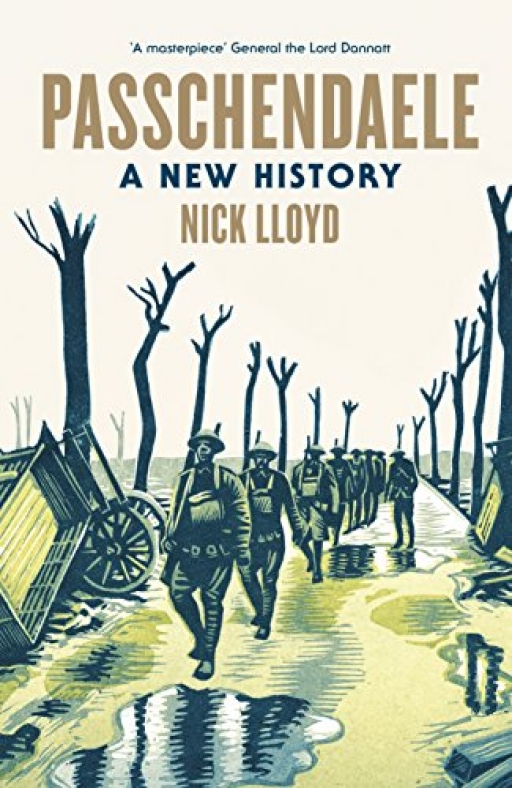Publisher’s Description:
‘The Third Battle of Ypres was a ‘lost victory’ for the British Army in 1917. Between July and November 1917, in a small corner of Belgium, more than 500,000 men were killed or maimed, gassed or drowned – and many of the bodies were never found. The Ypres offensive represents the modern impression of the First World War: splintered trees, water-filled craters, muddy shell-holes.
The climax was one of the worst battles of both world wars: Passchendaele. The village fell eventually, only for the whole offensive to be called off. But, as Nick Lloyd shows, notably through previously overlooked German archive material, it is striking how close the British came to forcing the German Army to make a major retreat in Belgium in October 1917. Far from being a pointless and futile waste of men, the battle was a startling illustration of how effective British tactics and operations had become by 1917 and put the Allies nearer to a major turning point in the war than we have ever imagined.’
Review by Centenary News Editor:
This thought-provoking book should at least challenge some pre-conceived notions about the Third Battle of Ypres/Passchendaele.
It opens with the doom-laden premonition of the avant-garde artist, and artillery officer, Wyndham Lewis: “The moment I saw the name on the trench map, intuitively I knew what was going to happen.”
Yet Nick Lloyd suggests that it’s possible a major victory could have been won in Flanders.
After General Sir Herbert Plumer was put in operational command, his ‘artillery-heavy, bite-and-hold’ attacks had the effect of achieving a series ‘pulverising hammer blows’ in late September/early October.
Lloyd, who quotes revealingly from German sources throughout the book, notes that German commanders ‘ruefully conceded there was, quite literally, nothing they could do to to stop properly executed limited attacks.’
He laments that the British didn’t always fight to their strengths. That they did not is blamed on decisions made by the Commander-in-Chief, Sir Douglas Haig, blurred relations between the military and politicians (Prime Minister Lloyd George doesn’t escape criticism either) and the lack of a thoroughly considered national stategy for proecuting the war.
Field Marshal Haig’s enthusiasm for starting the Passchendaele offensive with plans for a ‘hugely ambitious breakthrough’ under another General, Sir Hubert Gough, is criticised as a repeat of his mistakes at the Somme.
Here, Nick Lloyd takes issue with the familiar view of Haig as the unimaginative leader, following a stale doctrine of attrition for four years. It ‘masks the truth that he was a compulsive gambler; with the compulsive gambler’s habit of throwing good money after bad, convinced that this time, finally, the cards would fall into place.’
But luck eluded him from the outset, not least as Flanders suffered its wettest summer in decades, and the result was a battle that sank into a quagmire, advancing the Allied line only a few miles from Ypres.
Yet, as Nick Lloyd points out, the morale of British and Commonwealth forces held. More ordeals would follow but almost exactly a year to the day after the Canadians took Passchendaele, the First World War ended in Allied victory.
What do you think about this book? Please add a comment below
